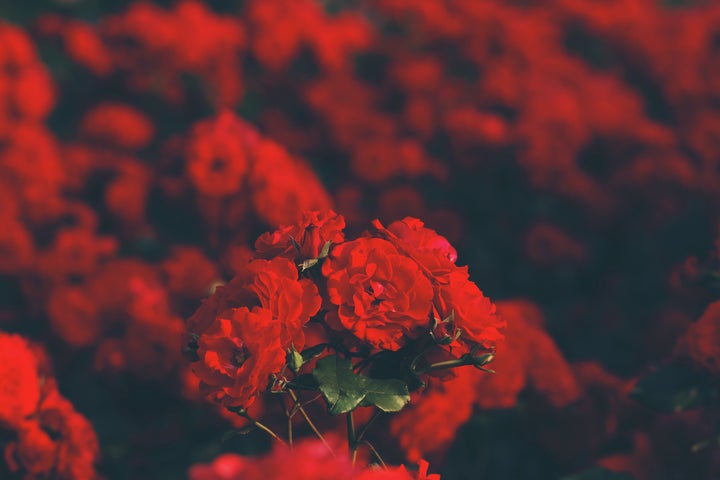
In Taiwan one red rose signifies an only love, eleven roses symbolizes a special someone, ninety-nine roses signifies “forever,” and one hundred eight roses is a marriage proposal!
With Valentine’s Day around the corner, couples worldwide are thinking of ways to express love. From exchanging love spoons to kissing in the capital, lovebirds express their sentiments with unique customs. Enjoy these 10 global unique celebrations:
Australia
During their 1850’s gold rush, newly-wealthy miners purchased ornate valentines for their sweethearts. These extravagant creations were perfumed satin pillows, elaborately decorated with flowers, colored shells, and taxidermy hummingbirds, placed in an intricately adorned box. These boxes and their gorgeous contents came to symbolize high standing and style.
Today, couples still exchange extravagant valentine's, a tradition coupled with more modern activities, such as a boat cruise with dinner, radio announcements, or a picnic on the beach.

China
The holiday Qixi Festival is considered “Chinese Valentine’s Day.” It’s celebrated on the 7th day of the 7th month of the Chinese calendar, on August 28, 2017. It originated from a legendary love story of a special day when separated lovers, a cowherd and weaver maid, could reunite for only one day a year. During the festival, young girls pray for sewing skills and make wishes for happiness and love.The Western February 14th Valentine’s Day is also becoming popular, especially with urban young people. Loved ones gift chocolates, flowers and fancy dinners.
Czech Republic
Valentine’s Day became popular after the 1989 Velvet Revolution. Czechs prefer celebrating their sweethearts on the Day of Love, May 1st. Couples gather under a blossoming cherry tree for a kiss, and exchange small gifts. In Prague, lovebirds venture to the Karel Hynek Mácha statute, a romantic author of the love poem Máj (May) to share a kiss.
Denmark
According to the Danish Ministry of Foreign Affairs, Valentine’s Day has only been celebrated since the early 1990’s, but the Danish have several unique traditions. Friends give one another pressed white flowers called “snowdrops”, and lovebirds exchange “lover’s cards,” transparent cards with a picture of the card giver offering his sweetheart a gift. Men may also give women a gaekkebrev, or a “joking letter” signed with anonymous dots. If the recipient can guess the letter’s author, she receives an Easter egg later that year.
Italy
As in many countries, Italian couples celebrate Valentine’s Day with tokens of love and festivals. In an older tradition, young ladies rise before dawn to glimpse their future husbands. According to popular legend, the first man that a woman saw on Valentine’s Day was her future spouse, or resembled her future betrothed.

South Africa
In South Africa, as in many countries, couples celebrate by exchanging love tokens such as flowers, chocolates, and gifts. Single women literally wear their hearts on their sleeves by pinning the name of their beloved to their sleeve. This tradition reveals to South African men the identity of their admirers.
South Korea
Celebration variations occur from February to April, beginning on February 14th, with women wooing their sweethearts with candy, flowers, and small tokens of admiration. On March 14th, known as White Day, men reciprocate by offering their lovers chocolate, flowers, and a gift. Singles celebrate Black Day on April 14th, and mourn their single status with a bowl of black bean-paste noodles known as jajangmyeon.
Taiwan
Valentine’s Day is celebrated on February 14th, and at the Qixi festival on the 7th day of the 7th month. Both days give lovers a chance to show affection. Men purchase lush bouquets with a special significance. One red rose signifies an only love, eleven roses symbolizes a special someone, ninety-nine roses signifies “forever,” and one hundred eight roses is a marriage proposal!

Wales
Wales celebrates Saint Dwynwen Day, the patron saint of lovers, on January 25th. In the 17th century, Welsh men began the tradition of giving love spoons to women that they loved on this day. These intricately carved spoons depicted various patterns and symbols: wheels signify support, horseshoes symbolize luck, and keys represent the key to a man’s heart.
However, you decide to celebrate Valentine’s Day, find a special way to spend time with the ones you love.
Sharon Schweitzer, J.D., is a cross-cultural trainer, an international protocol expert and the founder of Protocol & Etiquette Worldwide. In addition to her accreditation in intercultural management with the HOFSTEDE center, she serves as a Chinese Ceremonial and Banquet Dining Etiquette Specialist in the documentary seriesConfucius was a Foodie, on Nat Geo People and NTD Television Canada. She is the resident etiquette expert for popular morning lifestyle shows: ABC Tampa Bay’s Morning Blend and CBS Austin’s We Are Austin. She is regularly quoted by BBC Capital, Investor’s Business Daily, Fortune, National Business Journal, Reader’s Digest and Stylecaster. Her international award-winning, best-selling book Access to Asia: Your Multicultural Business Guide, now in its second printing, was named to Kirkus Reviews’ Best Books of 2015. Sharon is the winner of the British Airways International Trade, Investment & Expansion Award at the 2016 Greater Austin Business Awards.
